A beaded Glengarry hat is a fine example of the blending of cultures in America. A traditional Scottish Highlands style, this version was hand-beaded by Native Americans to be sold at Niagara Falls to tourists. Though the hat is an impressive example of traditional craftsmanship evolving in a new era, it is also a reminder of the plight of Indigenous Americans, who were left with few options other than selling roadside trinkets after the genocide of their people in the 18th Century.
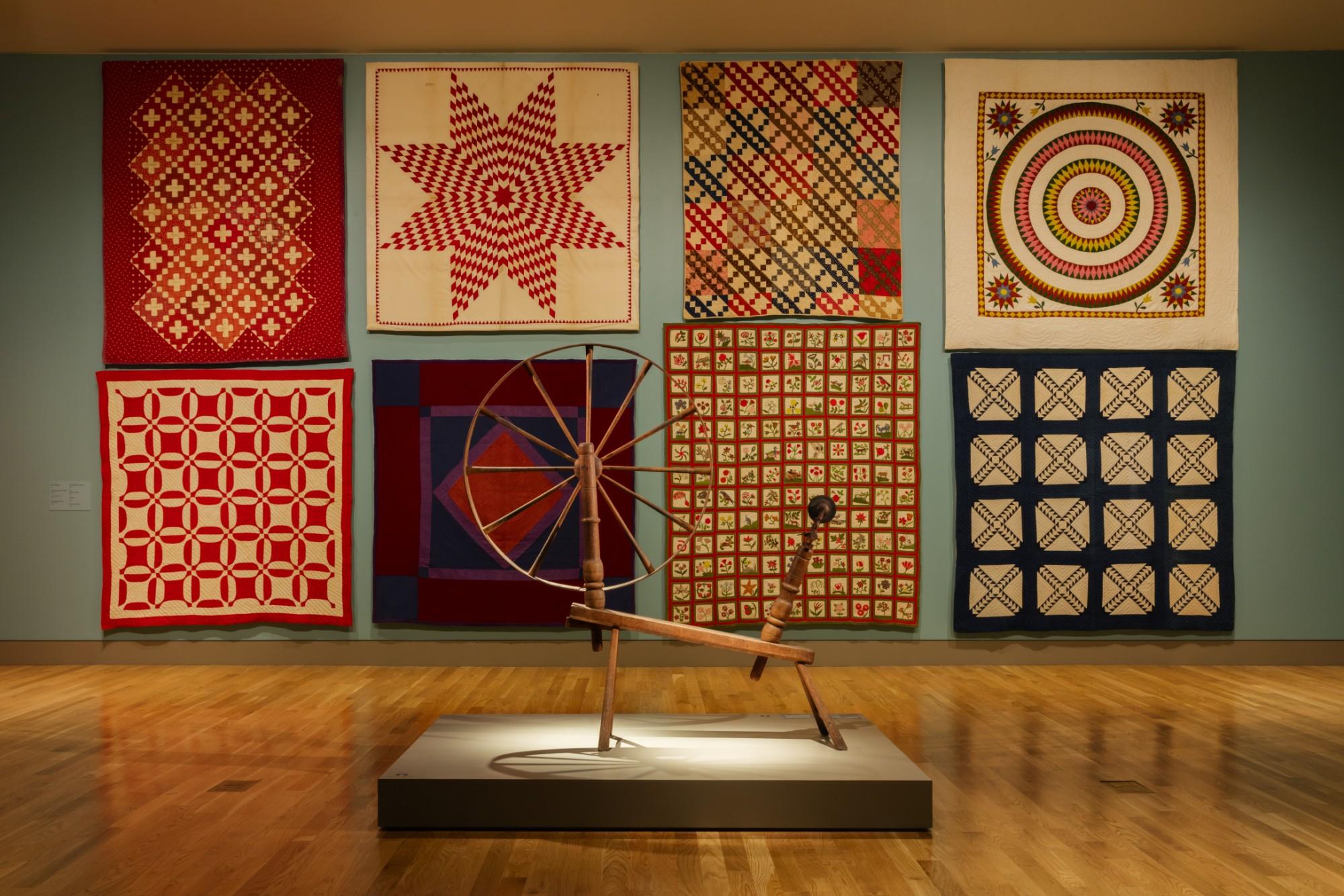
The Jonathan and Karin Fielding Collection of Folk Art, installed in the American Wing of the Huntington Art Museum
To learn about any culture, one of our greatest resources is its art, and America is no exception. While as a relatively young nation our history is somewhat short, the changes and growth we’ve seen as a country over the past two and a half centuries have been immense, and are well reflected in the arts of its people. From traditional folkways indigenous to North America to fine craftsmanship brought to America by immigrants, folk art gives us a window into the lives and identities of Americans who used the blank slate of early America to create something new.
At the Huntington Library, Art Museum, and Botanical Gardens, the stunning Jonathan and Karin Fielding Collection of Folk Art presents an in-depth look at this history through a wide breadth of exquisite American objects. A new book, Becoming America: Highlights from the Jonathan and Karin Fielding Collection of Folk Art lets you peruse these objects from home through beautiful reproductions and insightful text.
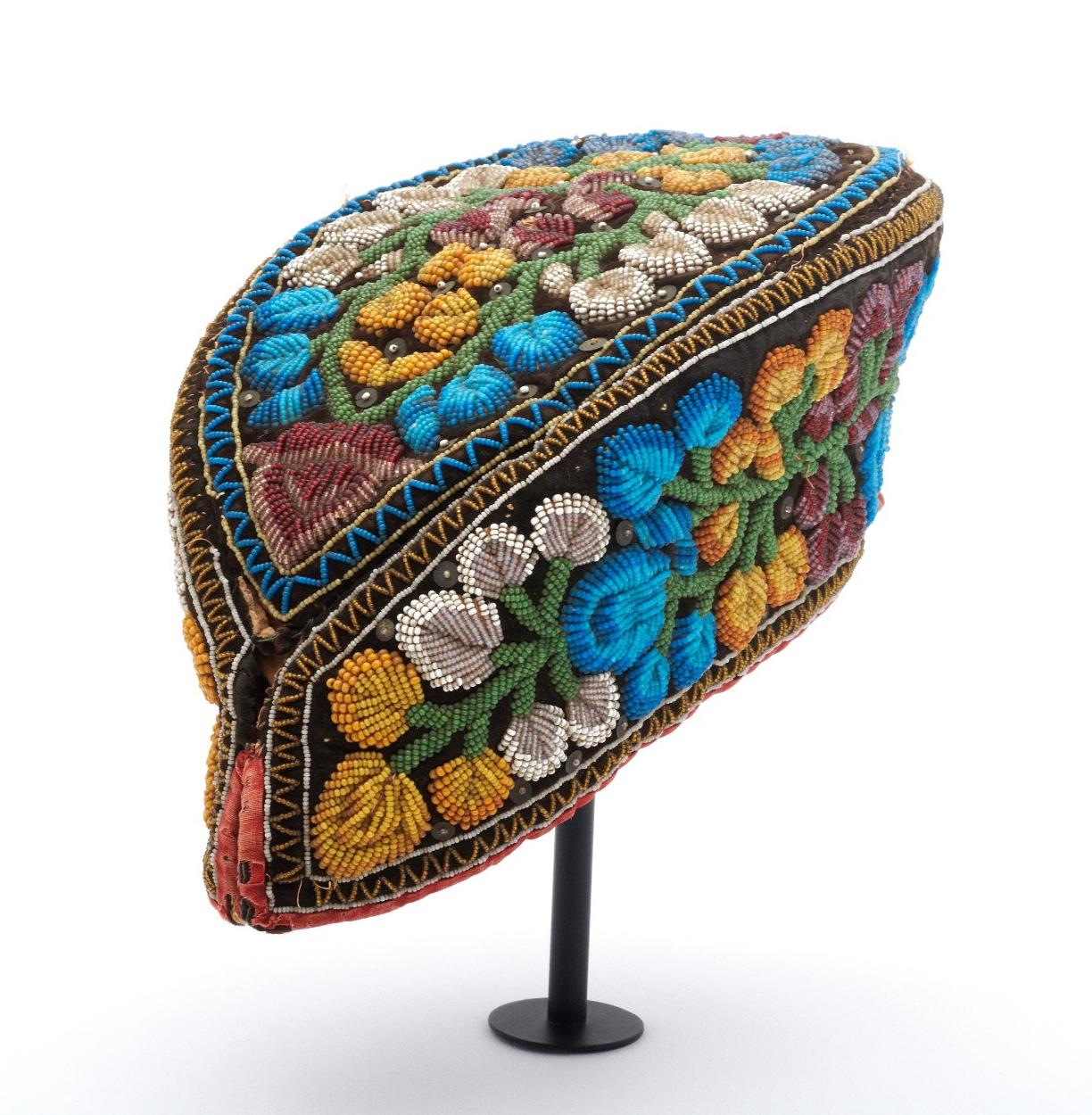
Iroquois Beaded Hat, c.1870. Jonathan and Karin Fielding Collection.

Attributed to John Hilling (American, 1822-1894), Before the Burning of Old South Church in Bath, Maine, c. 1854. Oil on canvas. Jonathan and Karin Fielding Collection.
The ups and downs of forging a uniquely American identity were many, as reflected in these objects. A set of paintings attributed to John Hilling shows that the path to a coexisting melting pot has often been a treacherous one. As the Irish population boomed in the mid-19th Century, so did anti-Catholic sentiment, leading to the burning by mob of a Catholic church in Bath, Maine.
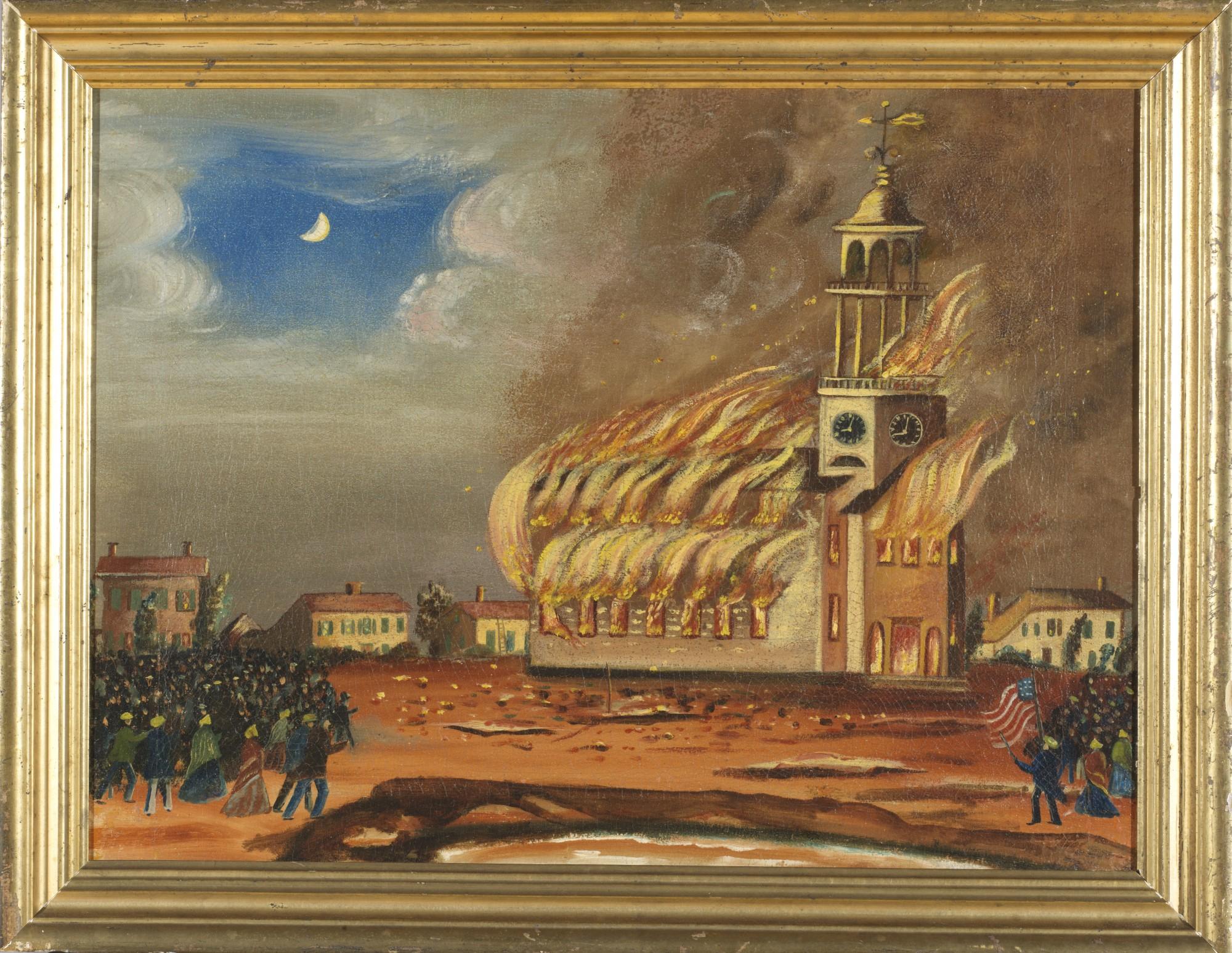
Attributed to John Hilling (American, 1822-1894), The Burning of Old South Church in Bath, Maine, c. 1854. Oil on canvas. Jonathan and Karin Fielding Collection.
Americans are known for their resilience and resourcefulness, and despite difficult times, folk art often shows the joys and simple pleasures of life in a new country. A 19th-century still life shows the bountifulness of the land of plenty. Painted by John Proctor, an African-American artist, the painting is a reminder that despite conflicts, America has still been a land of opportunity. Set against a dark background, a juicy watermelon and glistening grapes entice us, as do the colorful stylized flowers. But like traditional Dutch vanitas, this still life is a reminder of our mortality, as all of these fruits will rot, and the goldfinch is a symbol of the resurrection.
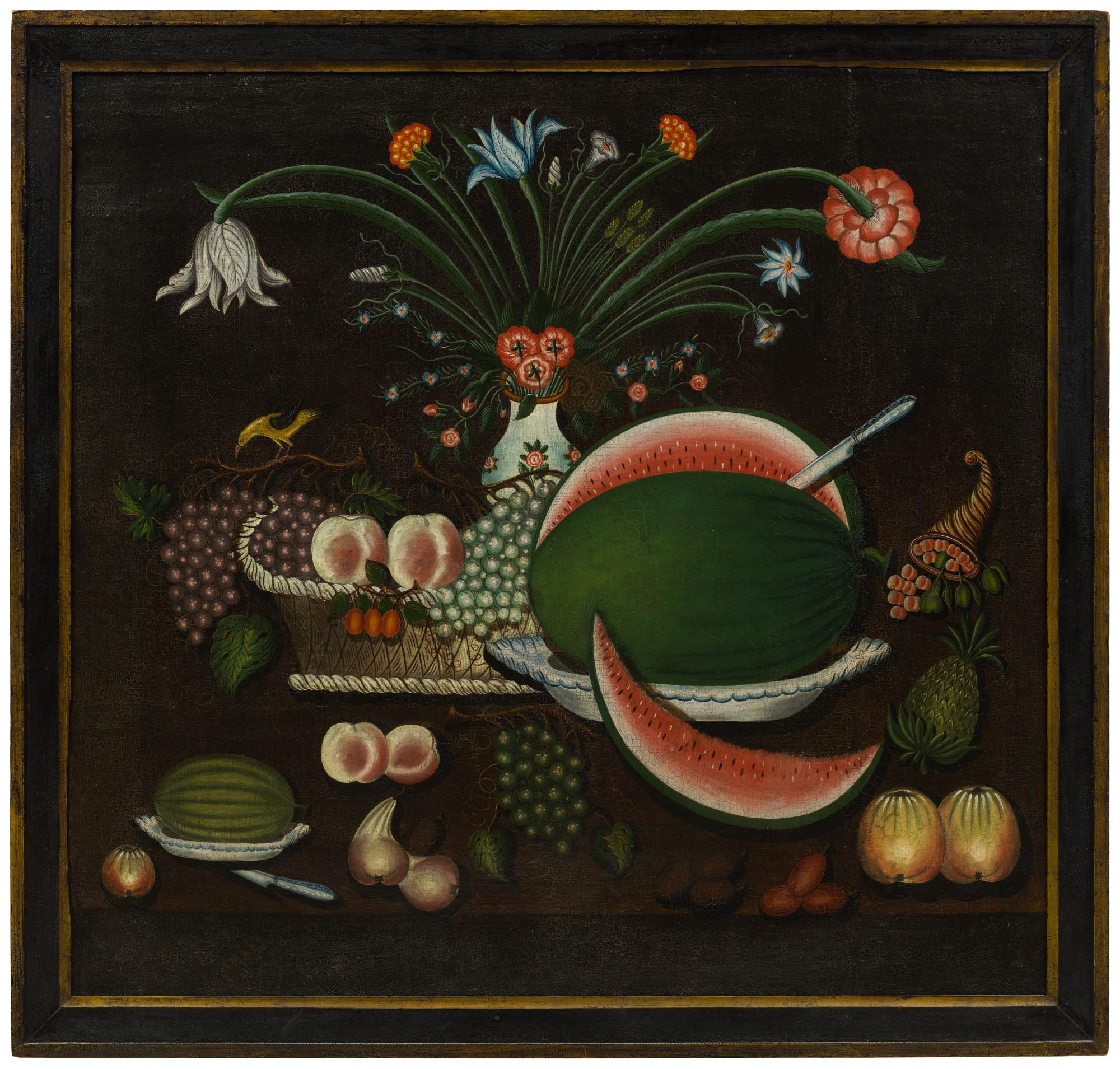
Attributed to Joseph Proctor (American, active 1860), Still Life with a Basket of Fruit, Flowers, and Cornucopia, 19th century. Oil on canvas. Jonathan and Karin Fielding Collection.
In a pre-modern medicine era, portraiture served as a way to document the often fleeting lives of Americans. Child mortality rates were high, and it was not uncommon to lose multiple children early in their lives. Bereaved parents who had the means would honor their lost children through portraiture. Samuel S. Miller shows a healthy Cynthia Mary Osborn in his portrait, ready to play in the yard with her hoop, though the presence of goldfinches, flowers and trees symbolize death and mourning.
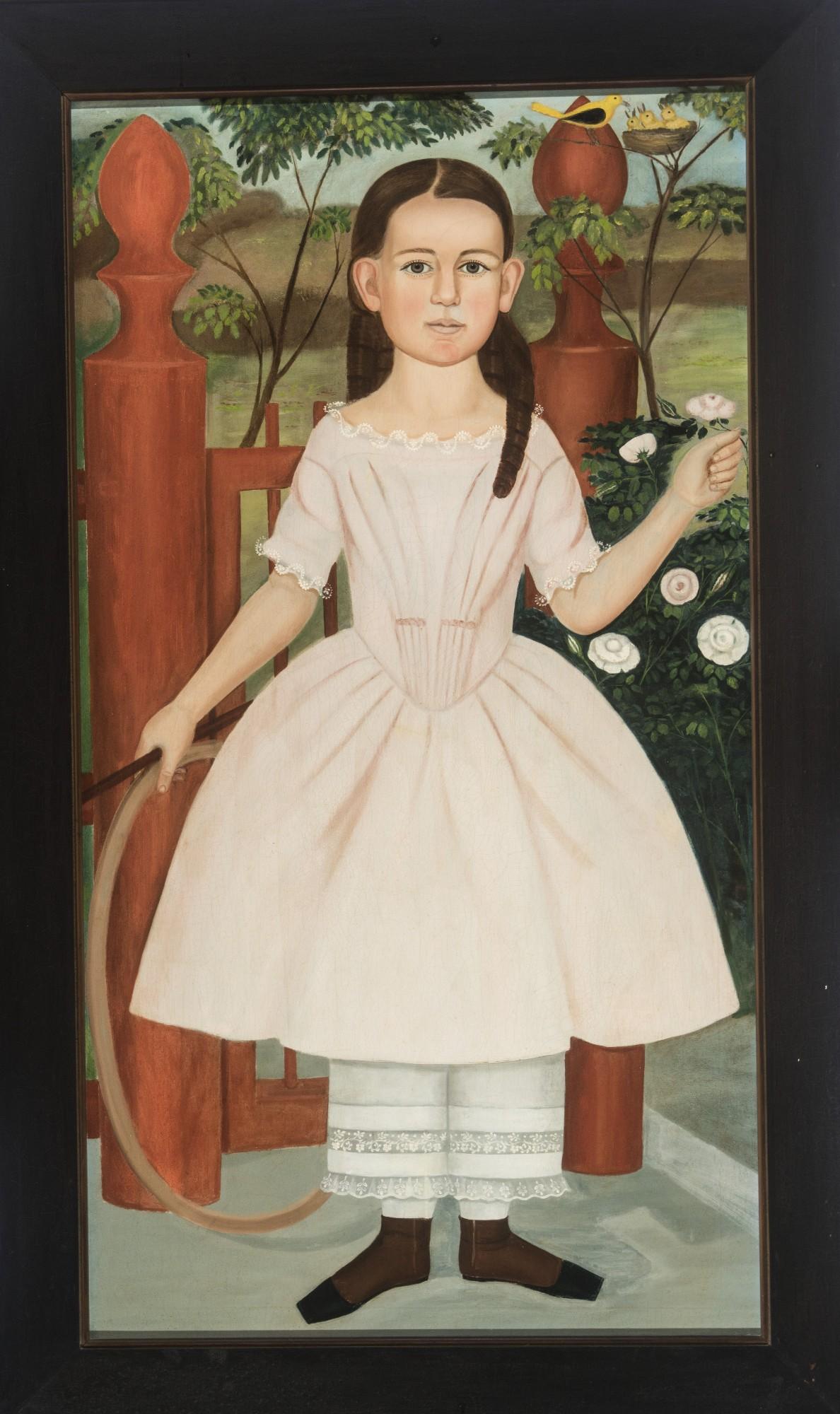
Samuel S. Miller (1807-1853), Portrait of Cynthia Mary Osborn (1834-1841), c 1843. Oil on canvas. Jonathan and Karin Fielding Collection.
Becoming America takes us through how Americans shaped their new country and recorded their lives through their artistry and craftsmanship. Be it everyday objects like quilts and furniture, or portraits and still lives, Americans have always forged new identities and told their stories through beautiful objects.




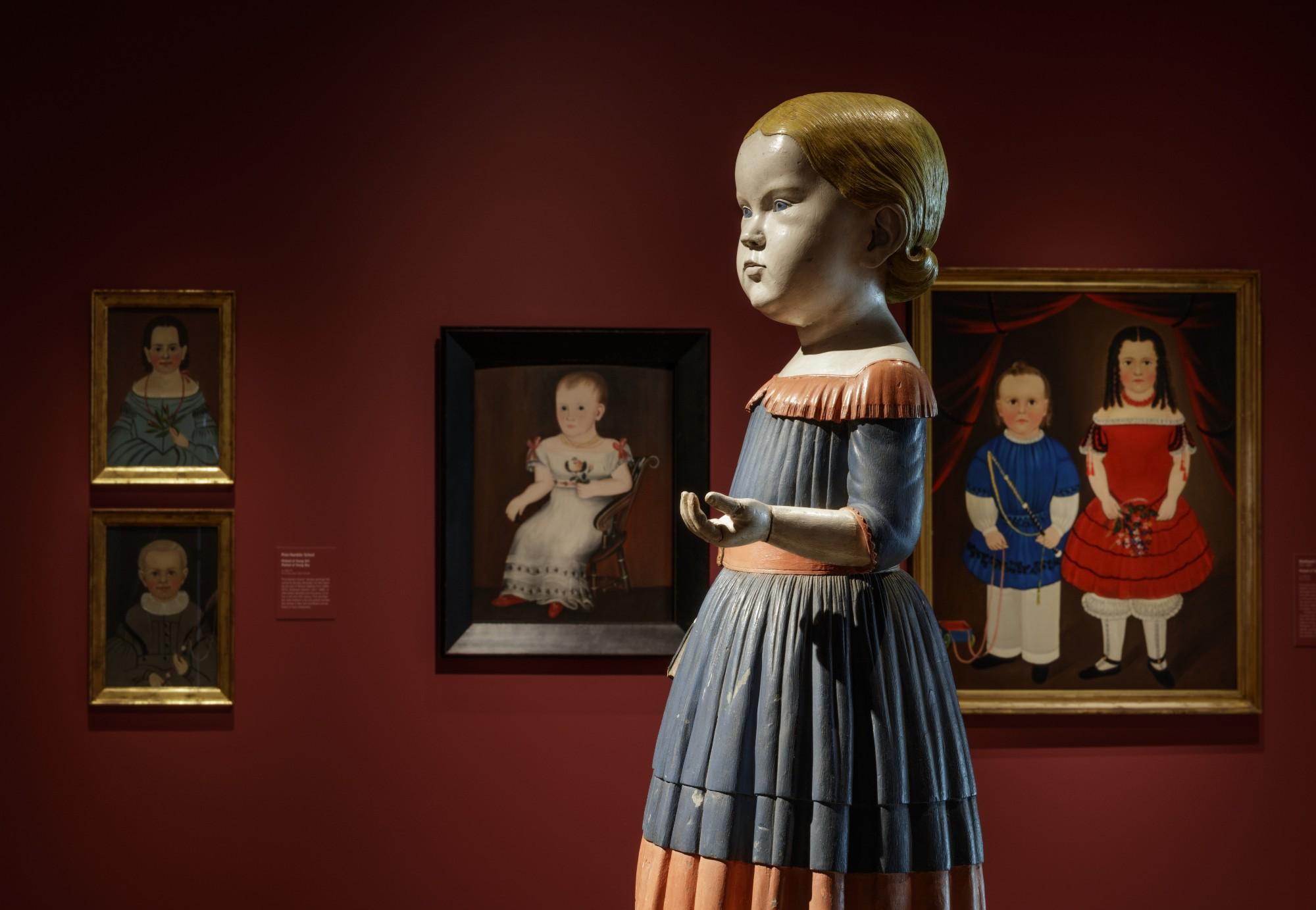
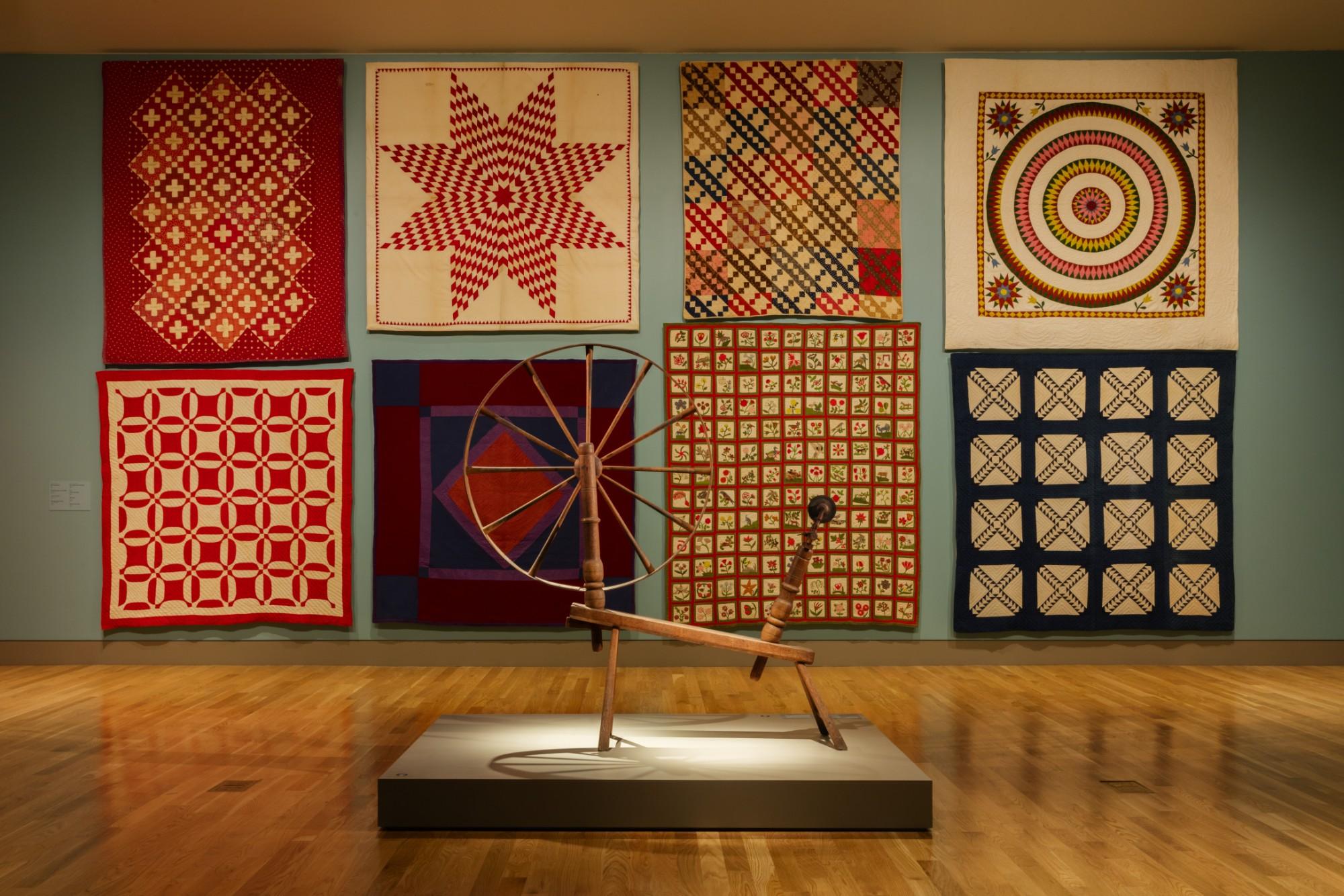
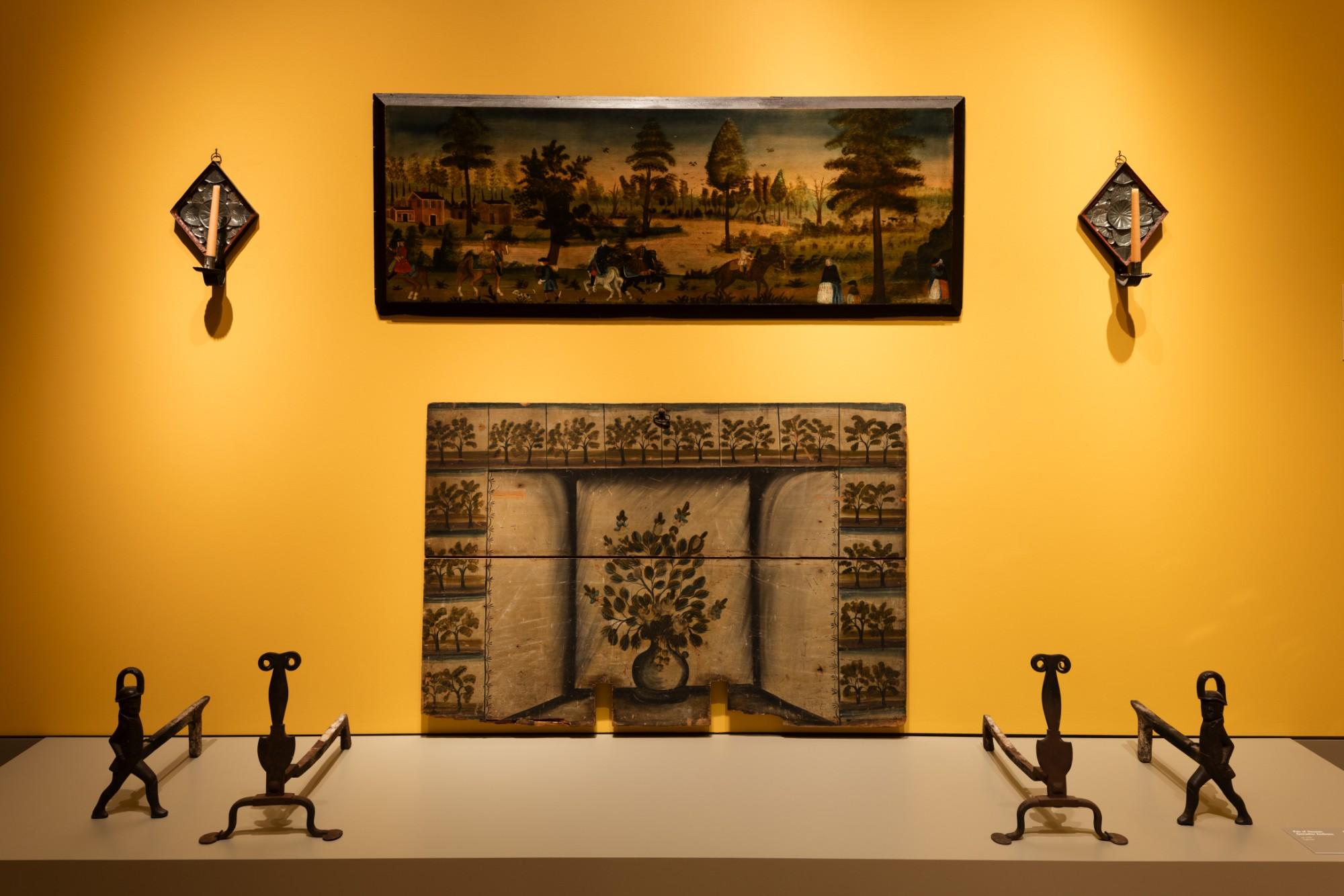
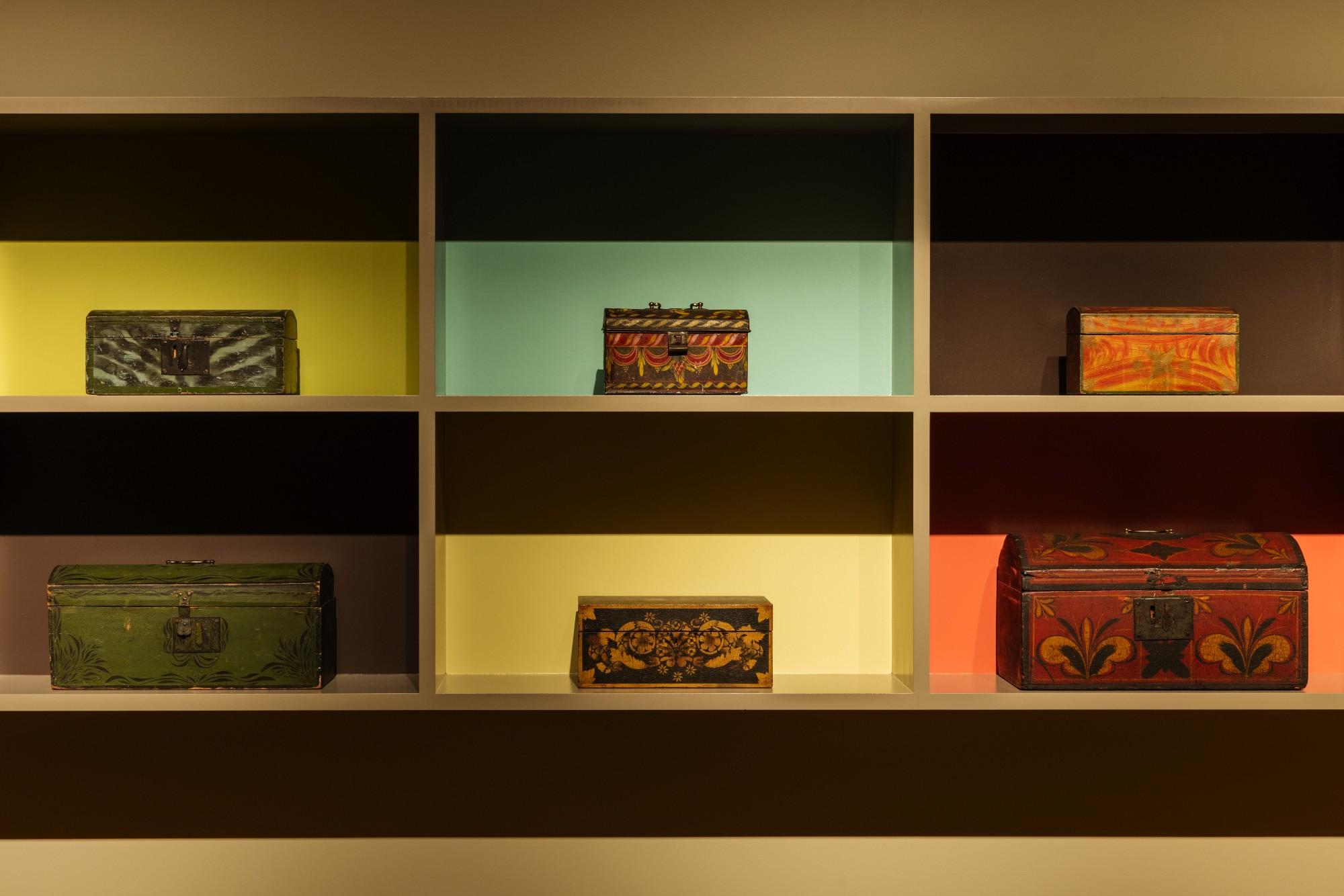
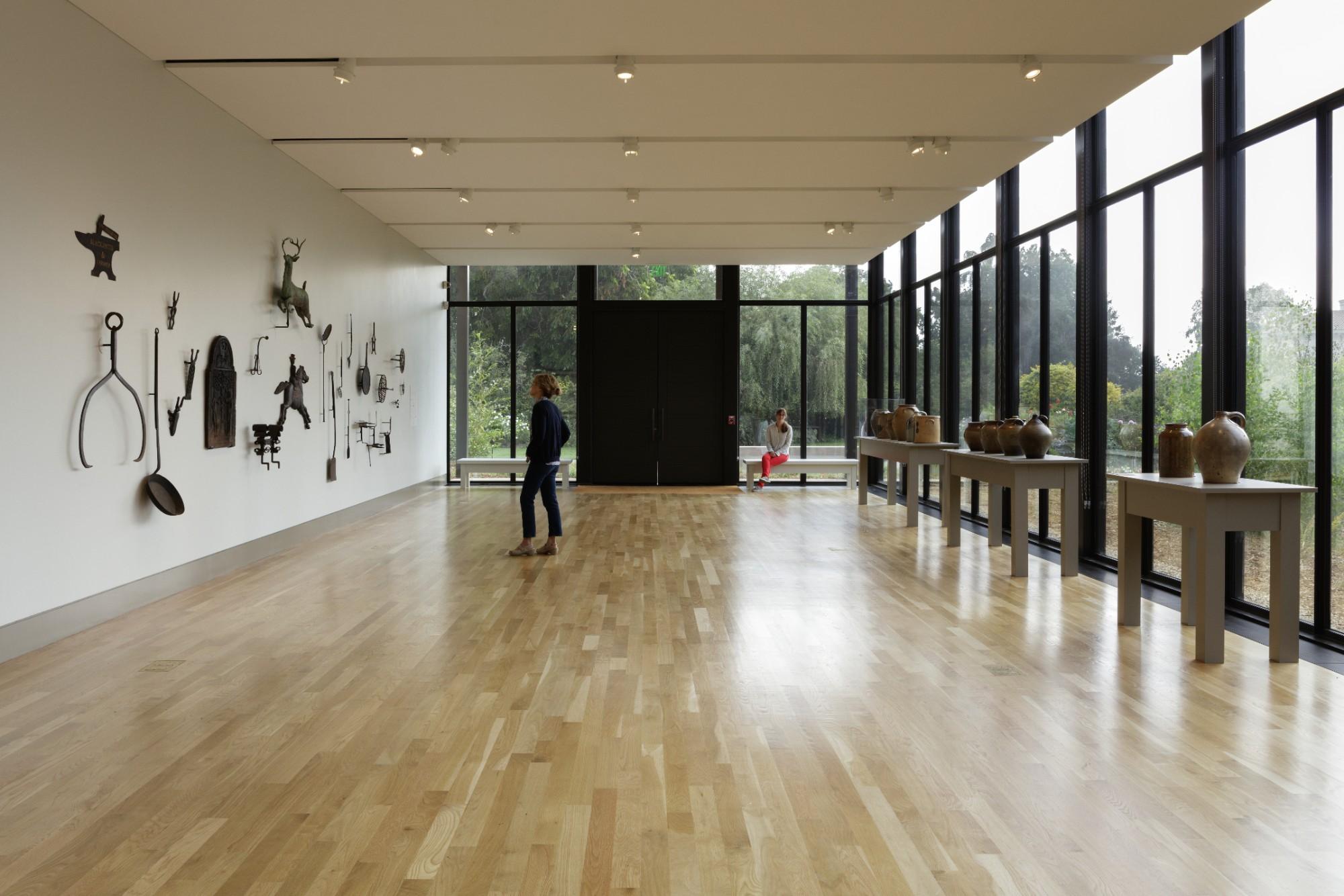


















![DEl Kathryn Barton [Australian b. 1972] the more than human love , 2025 Acrylic on French linen 78 3/4 x 137 3/4 inches 200 x 350 cm Framed dimensions: 79 7/8 x 139 inches 203 x 353 cm](/sites/default/files/styles/image_5_column/public/ab15211bartonthe-more-human-lovelg.jpg?itok=wW_Qrve3)



